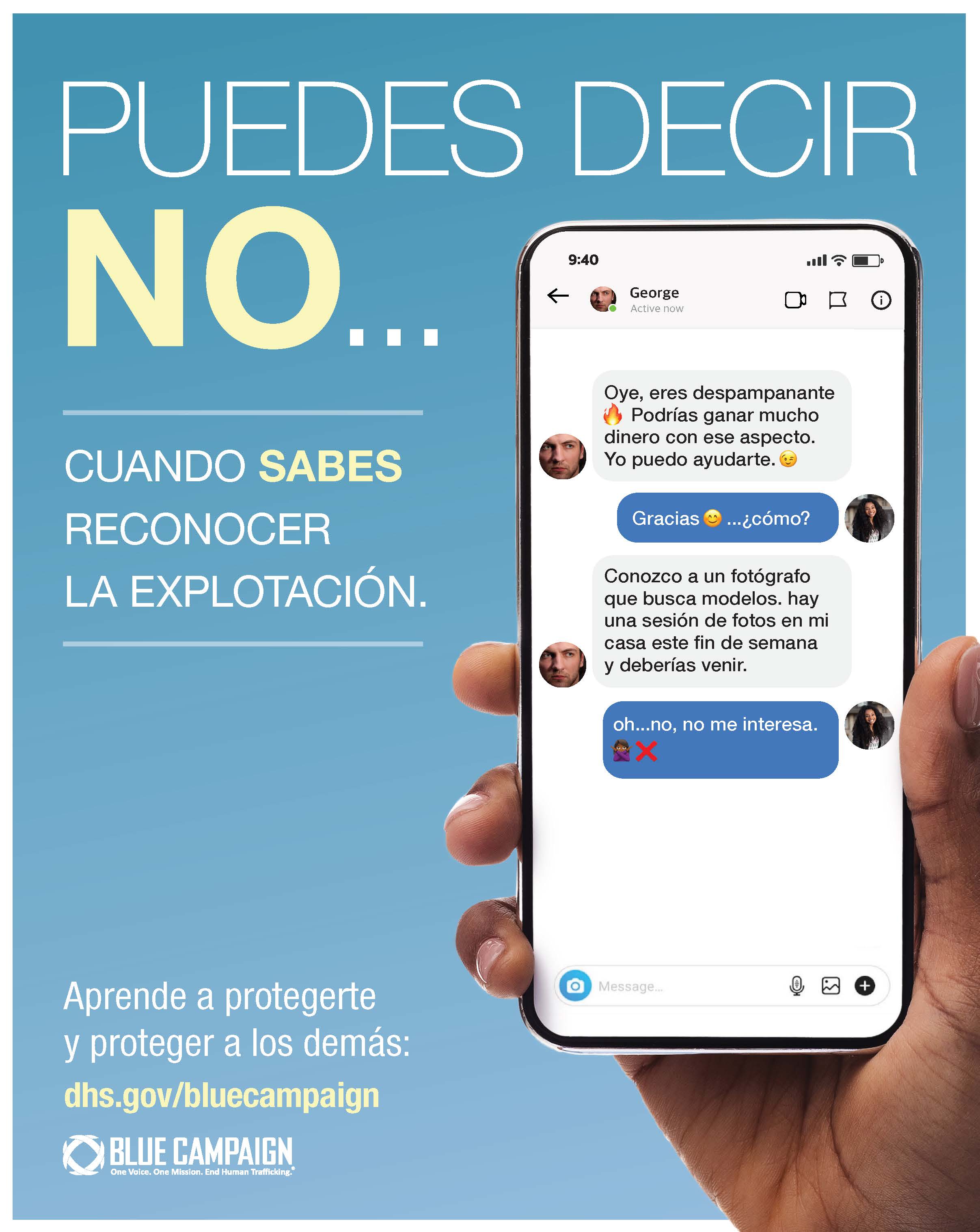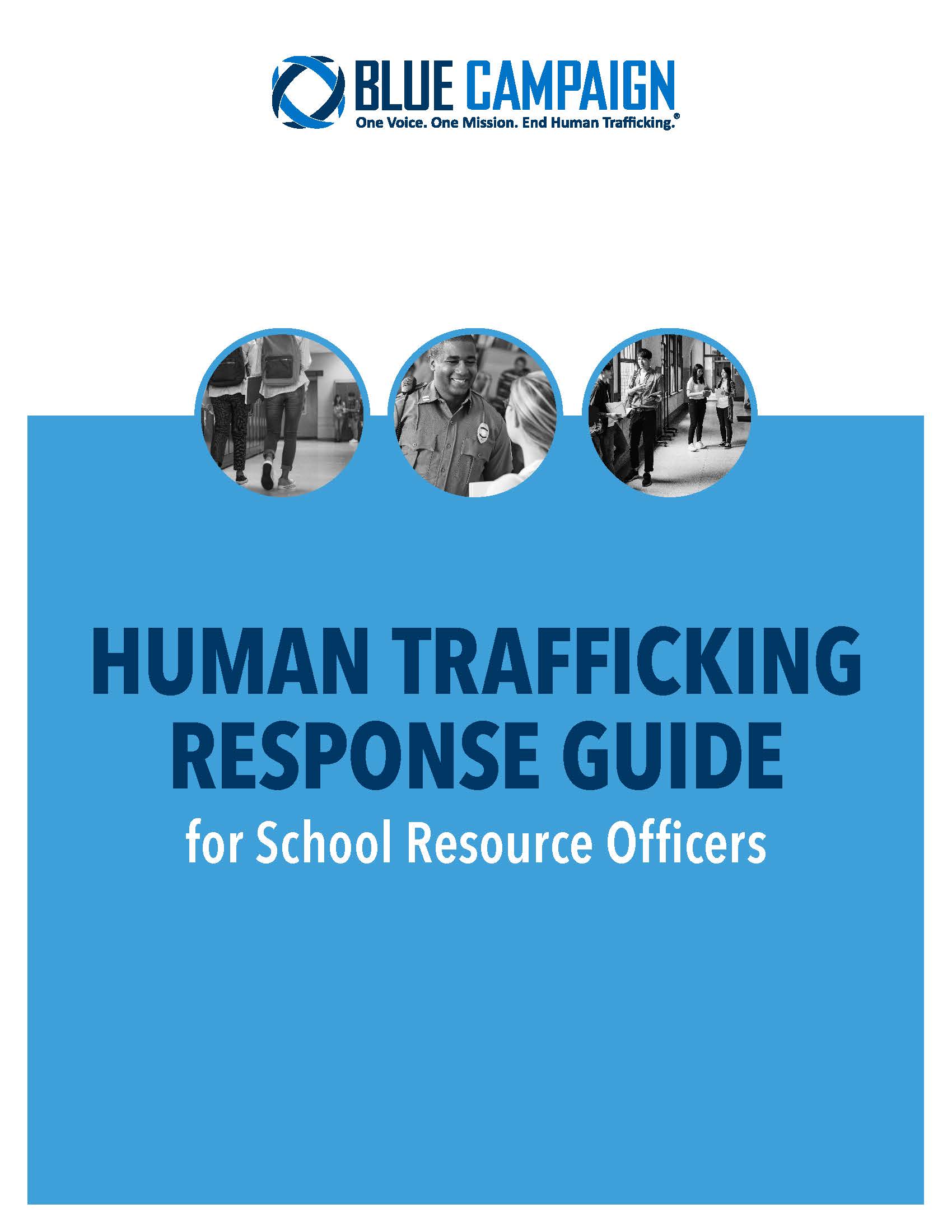Contact Us
To provide feedback on the Community Policing Dispatch, e-mail the editorial board at CPDispatch@usdoj.gov.
To obtain details on COPS Office programs, publications, and resources, contact the COPS Office Response Center at 800-421-6770 or AskCopsRC@usdoj.gov

U.S. Department of Justice
Office of Community Oriented Policing Services
Washington, DC 20530
Millions of people of all ages are trafficked every year. It happens across the globe, including right here in the United States. Human trafficking can occur in any community and victims can be any age, race, gender identity, sex, ethnicity, nationality, immigration status, or socioeconomic class. Young people may be particularly vulnerable to human trafficking simply because they are young and may be less equipped to make informed and sound decisions, which is why school resource officers (SROs) are in a unique position to recognize and respond to potential victims. As an SRO, you may be able to notice signs that something is wrong in a student’s life during your daily job duties. To recognize the signs of how youth can be groomed into a trafficking situation, take a moment to watch “Mia’s Story” videos on the Blue Campaign website.
What is human trafficking?
To identify human trafficking and save potential victims, you must know what to look for. Human trafficking involves the use of force, fraud, or coercion to obtain some type of labor or commercial sex act. Victims often do not come forward to seek help because of vulnerability factors such as potential language barriers, not self-identifying as victims, or fear and distrust of law enforcement. Though they are often conflated, human trafficking and human smuggling are not the same thing. Human trafficking involves the exploitation of another person, while human smuggling is the illegal movement or transportation of a person. Human trafficking can exist in many forms, including sex trafficking and forced labor. Sex trafficking victims are manipulated or forced to engage in sex acts for someone else’s commercial gain. Sex trafficking is not prostitution. Traffickers may use fraudulent employment opportunities, false promises of love or a better life, psychological coercion, violence, or threats of violence to lure victims. Under federal law, any minor (under the age of 18) engaged in commercial sex is a victim of human trafficking, regardless of whether there is force, fraud, or coercion. Victims of forced labor are compelled against their will to provide work or service by force, fraud, or coercion. For example, an employer may use debt bondage to keep a forced labor victim from leaving their situation


How can I help stop human trafficking?
 As an SRO, continue working to build rapport and trust with the student body you serve. When you become a reliable adult in students’ lives, they may feel comfortable enough to come to you if they are in trouble.
As an SRO, continue working to build rapport and trust with the student body you serve. When you become a reliable adult in students’ lives, they may feel comfortable enough to come to you if they are in trouble.
It is important that SROs and other school staff work together. Continue to educate yourself, other SROs, and other school employees about human trafficking, potential indicators, and how to report it. Blue Campaign’s Human Trafficking Response Guide for School Resource Officers is a free resource that SROs can consult to learn more about the crime. This toolkit provides an overview of human trafficking, indicators, tips for how to use a victim-centered approach and talk to youth, examples of the crime, and reporting information. Every SRO should know the basics of human trafficking and be able to report a potential case.
What is Blue Campaign?
Blue Campaign is a national public awareness campaign in the U.S. Department of Homeland Security (DHS) designed to educate the public, law enforcement, and other industry partners to recognize the indicators of human trafficking and how to appropriately respond to possible cases. Blue Campaign works closely with DHS components to create general awareness training and materials to increase detection of human trafficking and to identify victims.
Blue Campaign resources
- More indicators can be found in Blue Campaign training and awareness resources. All resources are free and many can be downloaded directly from the Campaign’s Resources page.
- Learn more about Blue Campaign.
- Access free Blue Campaign resources.
- Reach out to Blue Campaign for free tailored training options for your organization: Bluecampaign@hq.dhs.gov.
- Sign up for Blue Campaign’s monthly newsletter to stay up to date on upcoming Blue Campaign initiatives.
- Learn how to combat human trafficking using a victim-centered approach by registering for Blue Campaign’s “Concern” course through Federal Law Enforcement Traning Centers (FLETC).Enter BCATP in the search bar to register.
Additional resources
- Read more about DHS U.S. Citizenship and Immigration Services (USCIS) immigration relief assistance.
- Keeping children and teens safe from online predators through education and awareness is the goal of Project iGuardian, a joint effort from Homeland Security Investigations (HSI), the National Center for Missing & Exploited Children’s NetSmartz, and the Internet Crimes Against Children (ICAC) Task Force. If you are interested in having an iGuardian presentation at your school, you can email iguardian@ice.dhs.gov. Visit the iGuardians website to learn more.
Subscribe to Email Updates
To sign up for monthly updates or to access your subscriber preferences, please enter your email address in the Subscribe box.






